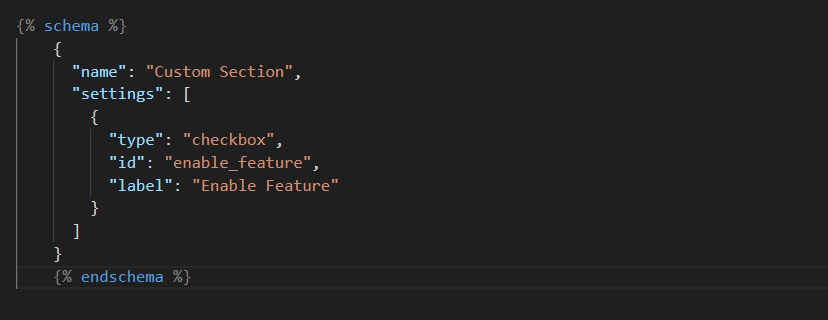Most Common Mistakes by Shopify Theme Creators and How to Avoid Them
Introduction
Designing a Shopify theme involves establishing a balance between good appearance and efficient operation while delivering proper features. Shopify developers dedicate most of their attention to appearance and user interface operations yet they ignore essential factors that impact customer satisfaction and sales success. This article focuses on the main errors theme developers produce when working with Shopify followed by different approaches and professional insights to develop better Shopify theme development, Shopify Speed Optimization, and Shopify SEO best practices.
1. Including Too Many Unnecessary Features in the Theme
Mistake:
Theme developers build their products with too many features to ensure versatility. The overuse of features in coding leads to large and slow programming that creates compatibility problems, affecting overall Shopify theme development and Theme speed optimization.
Alternative Approach:
Modules should replace the practice of including every available option within the design. Add JSON templates and Shopify sections together for effective utilization that enables users to activate specific features only, aiding in Shopify speed optimization.
Example:
Pros and Cons:
| Approach | Pros | Cons |
| Feature-packed themes | More versatility | Slower performance |
| Modular themes | Faster, lightweight | Requires more setup |
Recommendation:
Dawn Theme should be your choice since it comes as the default free theme which combines fast performance with lightweight design, ideal for Shopify speed optimization.
Why Dawn?
- The Shopify theme primarily depends on core tools while placing limitations on the usage of JavaScript code.
- The theme includes performance features that contain quick-loading capabilities alongside asset optimization features along with lazy loading methods.
- Accessibility-Friendly: Follows best practices for accessibility.
- Theme modification is basic because it uses current CSS together with Shopify Liquid templating features.
When developing a custom theme the utilization of Dawn base primitives creates an excellent starting point that allows you to adapt and extend the design.
2. Poor Theme Performance & Slow Loading Speed
- Not optimizing render-blocking resources.
- Using excessive third-party scripts.
- Avoiding lazy loading.
Code Example:
Pros & Cons:
| Pros | Cons |
| Faster load times | Requires thorough testing |
Alternative Approach:
Implement lazy loading, defer scripts, and preload important resources to ensure your Shopify theme loads quickly and smoothly.
3. Ignoring SEO Best Practices
Mistake:
Neglecting Shopify SEO best practices during Shopify theme development can result in poor search rankings. Factors such as page load times, improper heading structure, and missing image attributes can significantly harm a site’s SEO, leading to a slower-performing Shopify Theme.
Alternative Approach:
- Use structured data for products.
- Ensure proper heading hierarchy (<h1>, <h2>, <h3>).
- Use Liquid filters to reduce image sizes properly to boost SEO performance while contributing to Shopify Speed Optimization.
Example:
Pros and Cons:
| Approach | Pros | Cons |
| SEO-optimized themes | Better rankings, more traffic | Requires more planning |
| Basic themes | Faster to develop | Requires more setup |
Recommendation:
You should apply SEO-friendly markup language while optimizing images because it enhances web speed and search engine position, improving Shopify theme development and Shopify SEO best practices.
Ready to launch your Shopify store? We will create a standout site with our development and optimization to build a store that sells.
Contact us now and get your store up and running fast!
4. Hardcoding Colors and Fonts
Mistake:
Shopify provides theme settings along with CSS variables which helps you maintain superior control over customization, yet developers may still hardcode styles, limiting the flexibility for Shopify theme customization.
Alternative Approach:
Shopify provides theme settings along with CSS variables which helps you maintain superior control over customization, enabling better flexibility and adaptability for future updates in your Shopify theme.
Example:
Pros and Cons:
| Approach | Pros | Cons |
| Hardcoded styles | Easier to control | Less customizable |
| Dynamic settings | More flexible | Requires additional setup |
Recommendation:
The theme editor should enable users to modify both fonts and colors, ensuring better Shopify theme customization and easier future updates.
5. Not Optimizing for Mobile
Mistake:
The quality of user experience on mobile devices directly affects sales opportunities when a Shopify theme appears well but operates poorly.
Alternative Approach:
Responsive design through flexible grids and media queries should be implemented to ensure that the Shopify theme works seamlessly across all devices.
Example:
Recommendation:
Test themes on multiple devices and optimize for touch interactions to ensure a smooth mobile experience that supports Shopify Speed Optimization.
6. Poor Code Structure and Lack of Documentation
Mistake:
Difficult maintenance along with theme update procedures stem from disorderly code methods as well as insufficient documentation systems, which hinder Shopify theme development and future updates.
Alternative Approach:
- Follow Shopify’s Liquid best practices.
- Complex logic requires an explanation through added comments.
- Maintain proper file organization.
Example:
Recommendation:
The code must follow best practices while also receiving commentary throughout its implementation and the main features need documentation.
Conclusion
Shopify Theme Creators who prevent common errors during Shopify theme development along with using best practices will produce user-friendly Shopify themes with optimized SEO and superior performance. The development of your first or existing Shopify theme must prioritize the focus on usability with speed as well as flexibility by incorporating Shopify Speed Optimization strategies and Shopify SEO best practices.







